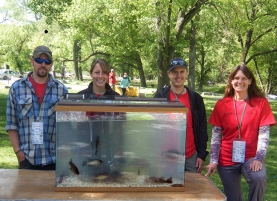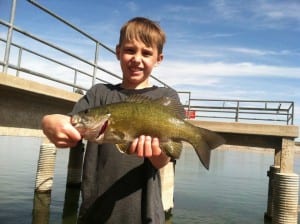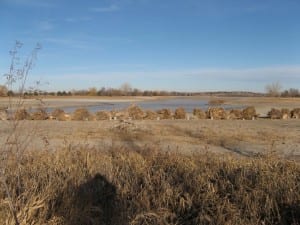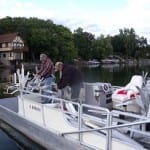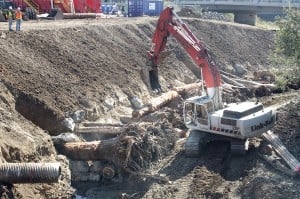At the Family and Youth Casting Call SOLitude Lake Management Teaches Over 700 Youth About Fishing
May 30, 2013 – Through its corporate volunteering program, The SOLution, SOLitude Lake Management, an industry leader in lake and pond management, fisheries management and related environmental services for the mid-Atlantic and surrounding states, participated in The Family and Youth Casting Call as volunteers, by stocking fish, and as a platinum sponsor of the event. The event was held May 3 – May 4, 2013 at the Fletcher’s Boat House in Washington, D.C. Over 700 youth attended this year.
In its 7th year, this annual event is geared towards getting kids outdoors, active, “hooked” on fishing, and educated about the importance of natural resources. SOLitude stocked just under 2,000 adult bluegill and largemouth bass, including several huge bass, in the C&O Canal for the children to catch and release.
SOLitude Lake Management also donated 97 total volunteer hours and set up a hands-on shad spawning game to demonstrate the shad’s difficult journey downriver to the open ocean, and then back upriver to lay their eggs. The children pretended to be in a simulated water environment, avoiding challenges and potential predators as they made their way through the obstacle course following the shad’s dangerous path.
“It was a really fun opportunity for our team to share our enthusiasm for water resources with the kids,” said Shannon Junior, Aquatic Ecologist and Regional Manager for SOLitude. “Many of them had never caught a fish before, and it’s an experience that they’ll remember forever.”
The SOLution is a company-wide program that encourages the company and all employees to strive to “create a better world” through volunteerism, community outreach, sustainability and environmental consciousness. SOLitude’s company leadership feels it is important to not only be good stewards of the environment and good corporate citizens, but also to fulfill company core values to “take action and be accountable”
Since 1998, SOLitude Lake Management has been committed to providing full service lake and pond management services that improve water quality, preserve natural resources, and reduce our environmental footprint. Our services include lake, pond and fisheries management programs, algae and aquatic weed control, installation of fountains and aeration systems, water quality testing and restoration, bathymetry, lake vegetation studies, habitat assessments and nuisance wildlife management. We are the second largest distributor of AquaMaster fountains and aerators internationally and in the U.S. Lake and pond management services are available in Virginia, North Carolina, South Carolina, Maryland, Delaware, Pennsylvania, West Virginia, New Jersey & New York. Fisheries management consulting and aquatic products are available nationwide. Learn more about SOLitude Lake Management and purchase products at www.solitudelakemanagement.com.
